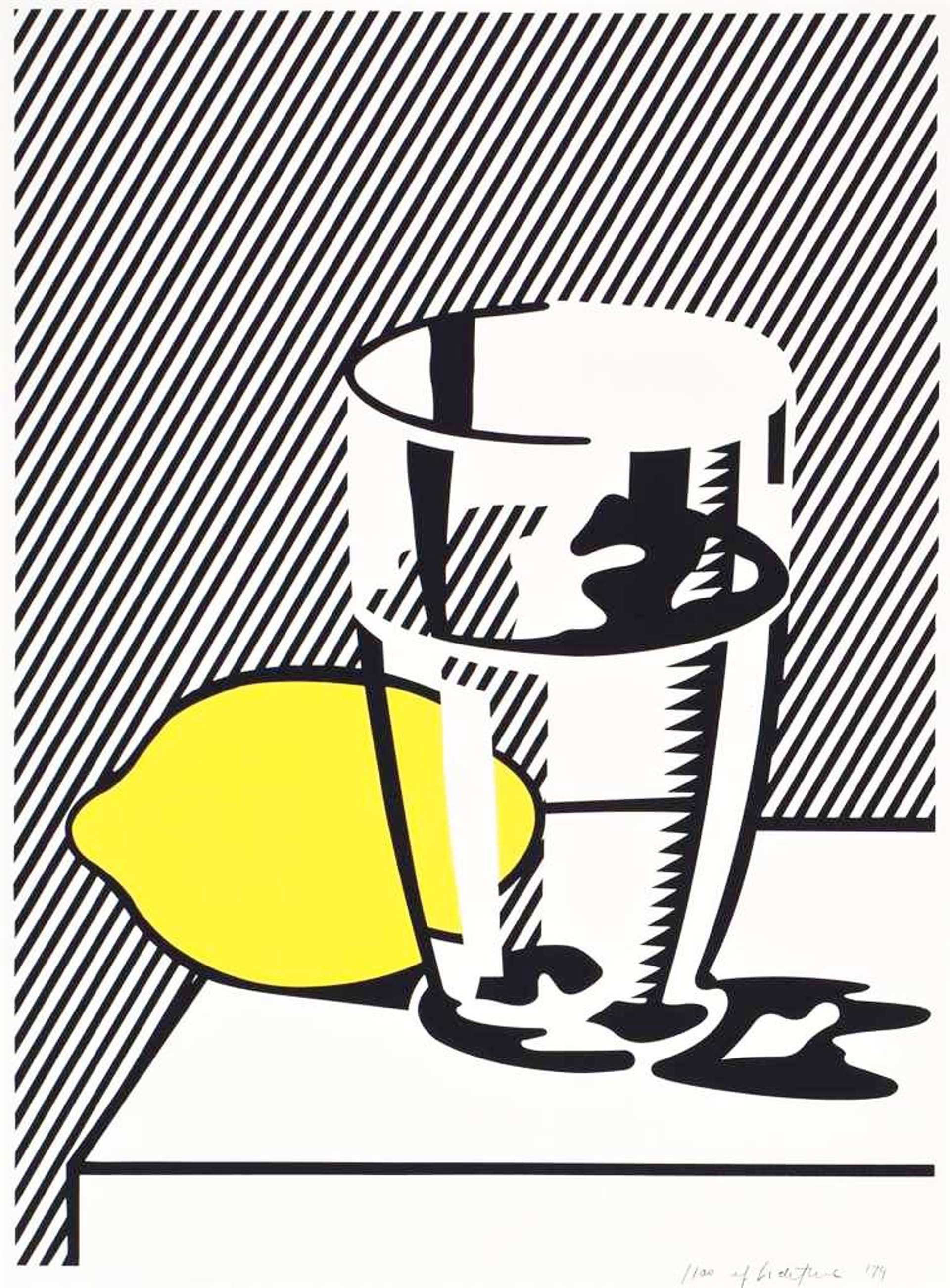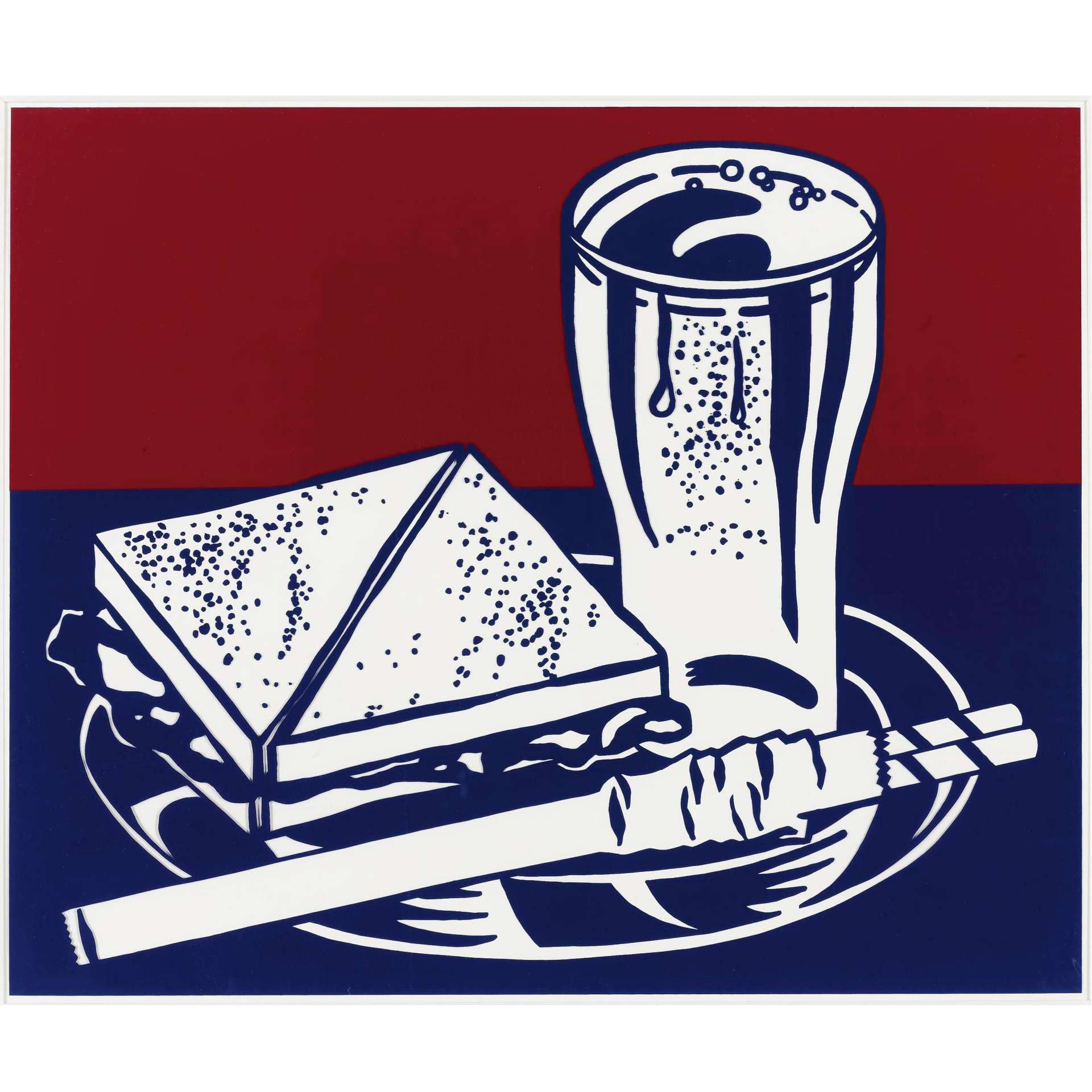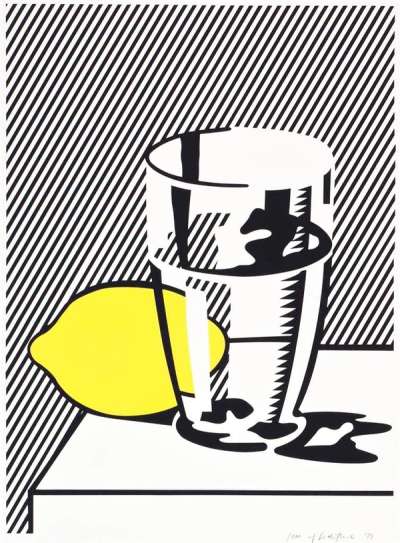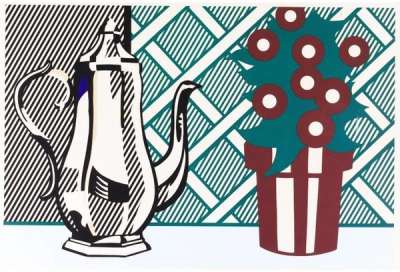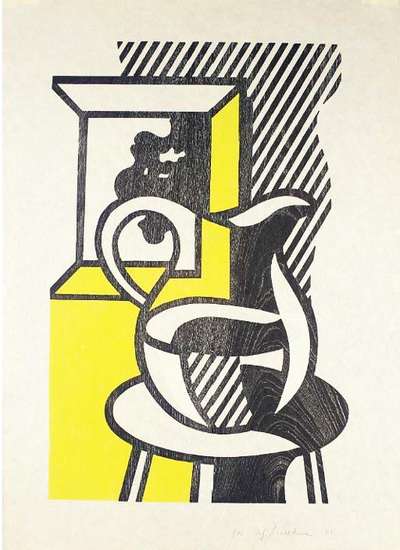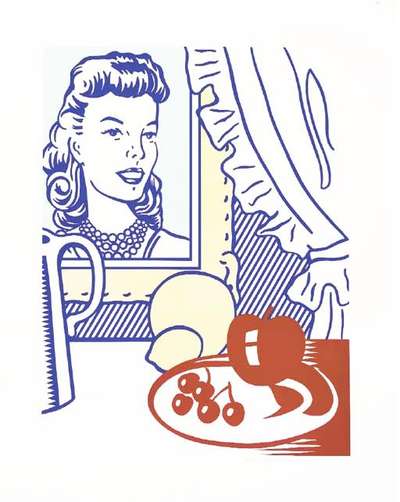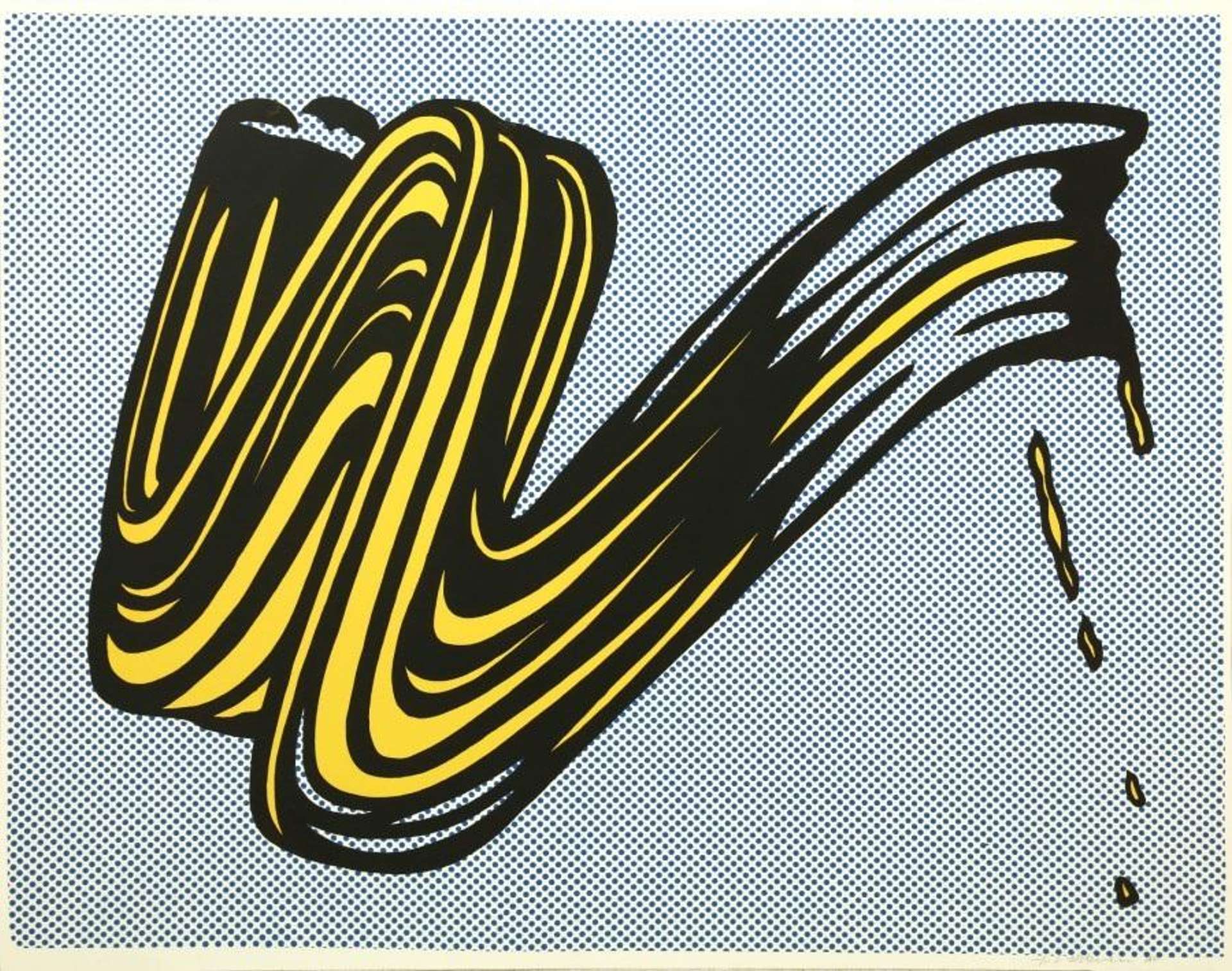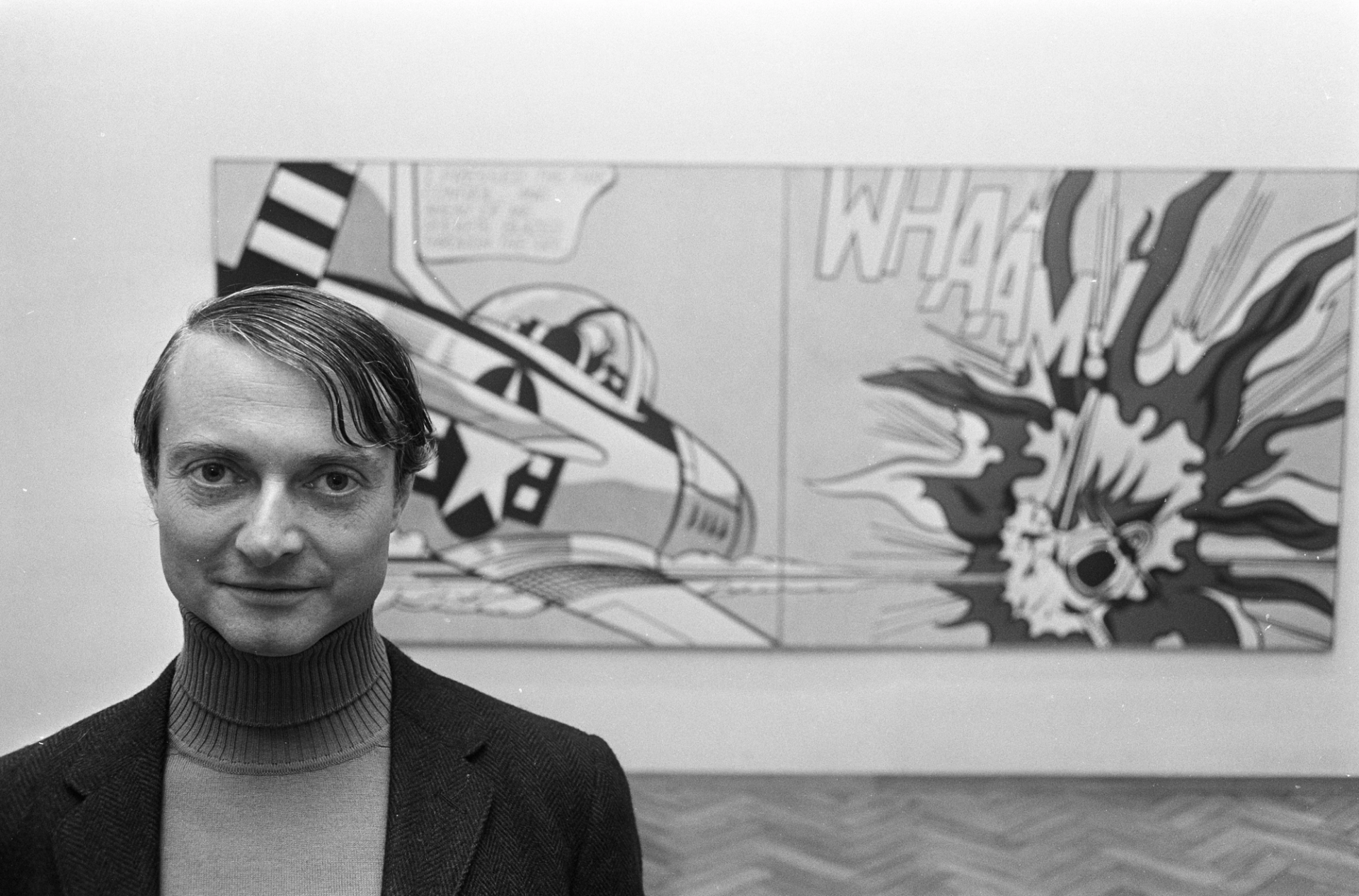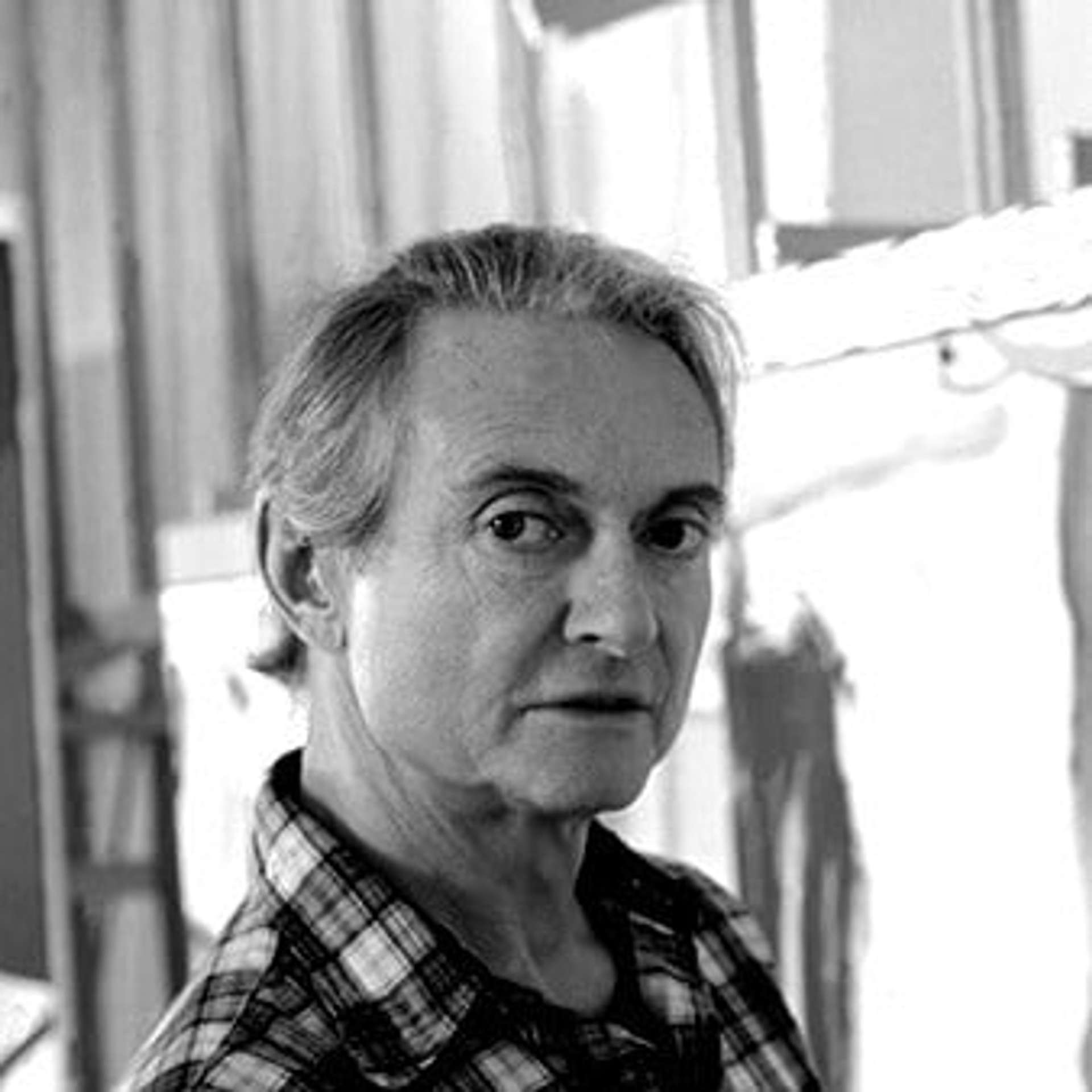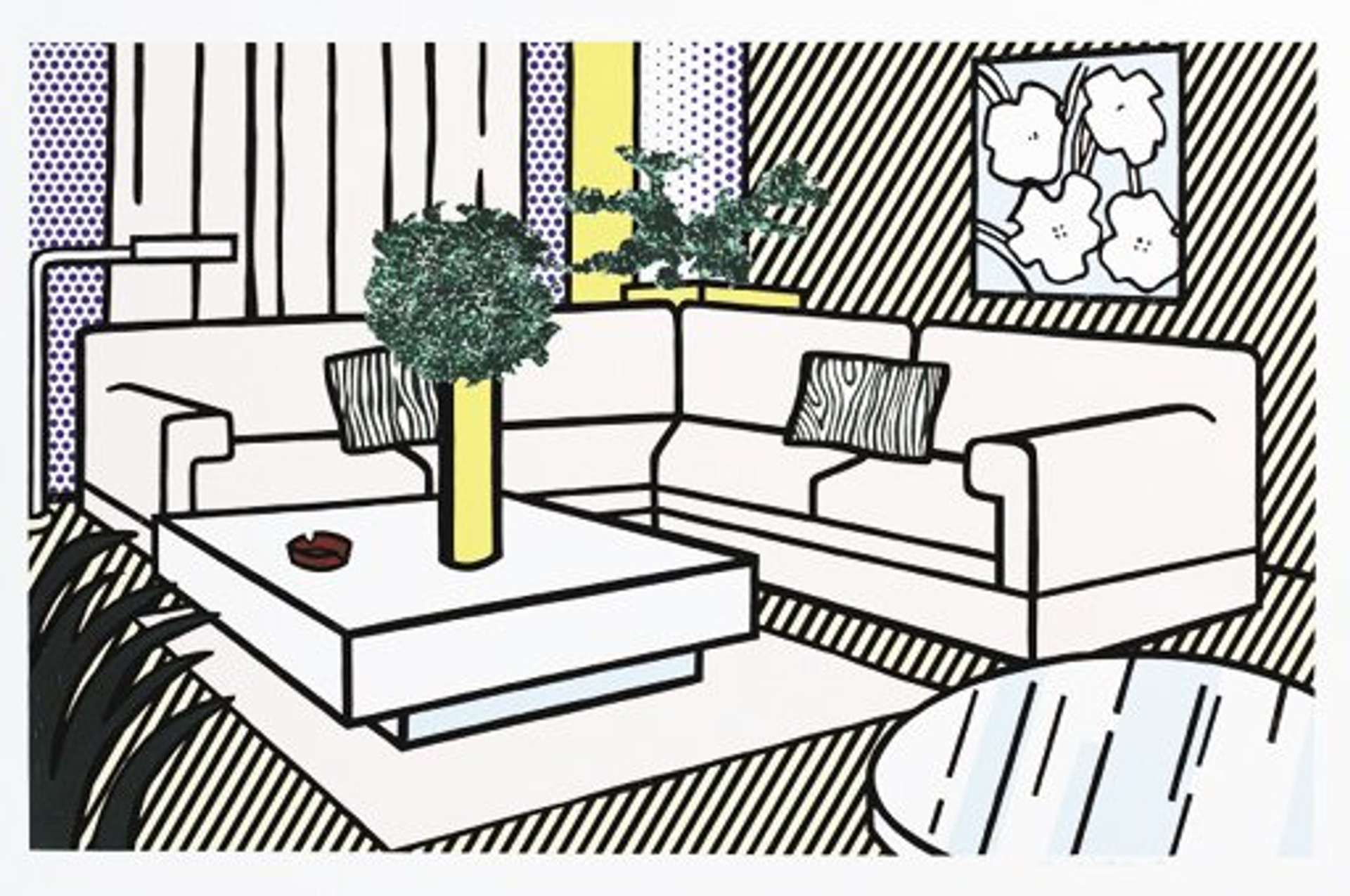 Brushstroke Still Life With Lamp © Roy Lichtenstein 1997
Brushstroke Still Life With Lamp © Roy Lichtenstein 1997Few movements have captured the zeitgeist of contemporary culture quite like Pop Art. As its name suggests, it delved into the realm of popular culture, challenging traditional art conventions and blurring the lines between high and low art. Among the Pop Art visionaries, Roy Lichtenstein stands out thanks to his unique approach to still life – a subject often derided amongst artists and enthusiasts alike. Eschewing the conventional depictions of fruit bowls and static table settings, Lichtenstein brought to life the everyday objects of post-war America, infusing them with a fresh, comic-book aesthetic that both celebrated and critiqued consumer culture. Through his bold lines, vibrant colours, and innovative use of Ben-Day dots, Lichtenstein transformed the ordinary into the iconic, forever altering our perceptions of still life as a genre and of art's place in society.
The Merits of Still Life: Everyday Objects in New Light
Still life art, with its meticulous depictions of inanimate objects has historically played second fiddle to "grander" genres such as portraiture or history paintings. Throughout the annals of art history, it was not uncommon for still lifes to be brushed aside as mere exercises, where budding artists honed their skills before taking on more complex subjects. Yet, this interpretation undersells the rich tapestry of messages, stories and symbolism that still life has contributed to the artistic world.
Despite their seemingly simple facades, many still lifes are rife with hidden meanings. During the Renaissance and Baroque periods, artists often imbued their works with moral lessons. A depiction of decaying fruit, for instance, might not just be a study of texture and shadow but also a stark reminder of the transience of life. Symbols of mortality, such as skulls in vanitas paintings, further underlined life's fleeting nature and the futility of earthly pleasures. In this light, the still life serves not just as a display of artistic talent but as a contemplative piece prompting introspection.
To deride still life as a lesser genre is to miss its multifaceted contributions to art. From its roots as moral compasses to its evolution into a lens that magnifies the allure and implications of everyday life, still life paintings have always had stories to tell. In the hands of great artists, the ordinary is transformed, becoming a medium through which we can understand our past, critique our present and envision our future. The still life, far from being a mere practice exercise, stands as a testament to art's ability to find depth and meaning in the everyday.
The Birth of Pop Art: Setting the Stage With Still Life
As art evolved, so did the role of the still life. The genre's intrinsic focus on the everyday offered artists a chance to elevate the mundane, and this celebration of the commonplace became a pivotal point for movements like Impressionism and Pop Art. While many artists in the Renaissance imbued their works with moralistic messages, Pop Art, on the other hand, stripped away these allegorical underpinnings and presented everyday objects in their raw, unembellished form. For artists like Lichtenstein and Andy Warhol, the allure of still life lay in its potential for commentary on consumerism and popular culture. They transformed these works into reflections on society's values, priorities and the often-blurred distinction between high and low culture. Everyday items like comic strips, and advertisements—subjects that were once considered unworthy of artistic focus—were magnified and brought to the fore. By boldly taking the essence of still life and infusing it with contemporary energy, Pop artists questioned conventions, turning the mundane into the extraordinary and, in the process, redefining the very nature of art and our notions of still life.
Beyond Ben-Day Dots: Lichtenstein's Style and Technique
Lichtenstein is perhaps best known for his use of Ben-Day dots, a printing technique hailing from the commercial art world. However, to limit Lichtenstein’s artistic legacy to this single element is to do a disservice to the depth, innovation and intricacies of his oeuvre. Delving into Lichtenstein's work reveals a rich tapestry of styles and techniques that went far beyond his iconic dots.
To understand Lichtenstein's broader style, however, it is essential to first appreciate the significance of the Ben-Day dot technique and the concept behind it. Borrowed from the comic strip and advertising industries, these small coloured dots were used in mass-market printing to cheaply produce shading and secondary colours. Lichtenstein's appropriation of this method was a masterstroke of artistic commentary: he was effectively elevating a commercial technique to the realm of fine art, bridging the gap between everyday popular culture and the elitist art world.
Beyond the dots, Lichtenstein's works are characterised by bold black outlines, reminiscent of the inked borders of comic panels. Apart from delineating shapes and forms, these lines also heightened the dramatic impact of his images. His colour palette, dominated by primary colours, further enhanced this graphic effect. His style’s simplicity and boldness, largely devoid of nuanced shading or gradients, brought a directness to his works that evokes the straightforward appeal of mass media.
Lichtenstein's technique was not just about aesthetics; it was also deeply rooted in the conceptual. He often borrowed—some might even say parodied—images from comics and advertisements, recontextualising them to create new meanings. This act of borrowing and redefining was a deliberate choice, a way to comment on originality, authenticity and the blurring boundaries between high and low art. His style, though rooted in the visual language of popular culture, was far from one-dimensional. His methodical blending of commercial and traditional techniques, combined with his intellectual engagement with art's broader narratives, solidified his place as a visionary artist.
Roy Lichtenstein: Redefining Still Life
Lichtenstein stands out for his innovative and audacious approach to still life. Where many artists sought to break away from tradition, Lichtenstein did so with a unique twist: he engaged deeply with the conventions of the past, even as he reimagined them for the modern era. His work in still life is particularly noteworthy for its blend of homage, reinterpretation and critique. In one of his first forays into the subject, 1968’s Still Life, Lichtenstein turned the subject on its head by offering a semi-abstracted, fragmented view of a traditional still life scene featuring flowers and plants.
Later, he made a return towards a more figurative style that honoured the more traditional aspects of the genre. In his 1973 work Still Life With Picasso, for example, Lichtenstein painted a traditional still life scene, with fruits and a jug. However, he adds an homage to Pablo Picasso by placing paintbrushes inside the jug, and creating a distinctly Picasso-esque female figure to the right side of the composition. He entered into a dialogue with the Cubist master, adopting Picasso's forms and compositions while infusing them with his distinct comic-book style.
In the 1974 work Still Life With Windmill, he references the strong Dutch heritage of the still life genre by adding a distinctly Flemish windmill. This juxtaposition became a powerful commentary on art's evolution and its place in the contemporary world. The latter work is part of a dedicated series created that year, featuring six artworks with the artist's distinct take on still lives. While these works displayed everyday objects, they were anything but mundane: these works are bold and vibrant, employing his signature Ben-Day dots, strong lines and a primary colour palette reminiscent of commercial printing.
But Lichtenstein's journey with still life did not remain static. In the 1980s and 1990s, the artist increasingly leaned on more graphic depictions, such as in 1994’s Still Life With Red Jar, and introduced a new motif to his pieces: the brushstroke. This seemingly simple addition was laden with significance among his oeuvre, and by overlaying his still lifes with pronounced brushstrokes, Lichtenstein commented on the act of painting itself, emphasising the artist's hand and the medium's inherent artificiality. This style can be seen in the works Red Apple And Yellow Apple from 1983 and Brushstroke Still Life With Lamp, dating from shortly before his death in 1997.
Lichtenstein's Impact on Still Lifes
Lichtenstein's approach to still life was neither passive nor linear. His works are a testament to his deep engagement with art history and his commitment to pushing boundaries. At a time when the still life genre was often relegated to the shadows of more prominent artistic narratives, Lichtenstein's innovative and audacious approach breathed new life into it. His ability to fuse the classical with the contemporary and the everyday with the extraordinary, alongside his continuous stylistic evolution, ensured that his still lifes were not just depictions of objects but potent reflections on art, culture and society.
This revitalisation of the genre was not just a fleeting moment. Lichtenstein's work challenged subsequent generations of artists to reconsider the potential of still life. He demonstrated that the genre could be as malleable, significant and groundbreaking as any other form of artistic expression. As a result, many later artists have since engaged with still life, each bringing their unique interpretations and driving the genre's continued evolution. These include David Hockney, Tom Wesselmann and Julian Opie.
Lichtenstein's legacy, then, is not confined to his distinctive style or his iconic pieces. It is also evident in the renewed vigour and creativity with which artists approach still lifes today, ensuring that this once-undervalued genre remains vibrant and relevant.



